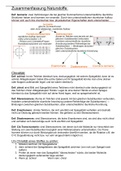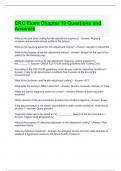Osgood, R. E. (2019). Limited war revisited. Routledge.
Chapter 1: Limited War in U.S. Foreign Policy
Section 1: The historical context
Origin of the Limited War Concept
Page 1 > Total wars of annihilation have been the principal stimulus of theories and doctrines
development of limited war and how to limit and fight wars as rational instruments of national
policy. The study of limited war emerged in reaction to the growing capacity and inclination
of states to wage total warfare, since WW2 the fear of nuclear war has accelerated to study of
limited war. Page 2 > This book's focus is on the strand of theory that looks to deliberate
restraint and the measured use of force to deter or defeat Communist military expansion
without running an unacceptable risk of general war.
Page 3 > The generally accepted definition of limited war that emerged in the West in the
1950s limited both the means and ends of war. Limited wars were to be fought for ends far
short of the complete subordination of one state's will to another's, using means that involve
far less than the total military resources of the belligerents and leave the civilian life and the
armed forces of the belligerents largely intact. According to a strict application of this
definition, limited war is not only a matter of degree but also a matter of national perspective
—a local war that is limited from the standpoint of external participants might be total from
the standpoint of the local belligerents, as in the Korean and Vietnam wars. Clearly, the
Western definition of limited war, like the theory, reflected not some universal reality but the
interests of the Western allies.
Why did limited war become such a lively conceptual concern in the cold war?
Page 5 > First, the United States feared that local wars might become instruments of
Communist expansion that could not be contained: indigenous local resistance would be
inadequate, and U.S. intervention would either be ineffective in shoring up weak governments
or entail too big a risk of Soviet or Chinese counter intervention and nuclear war. Second,
there was also fear that U.S. nuclear forces might prove an ineffective deterrent: the growth of
the Soviet capacity to devastate the United States and its allies would erode the credibility of
U.S. nuclear intervention or retaliation. In any case, U.S. nuclear weapons might be incapable
of preventing local wars that the major Communist powers did not directly initiate or wage
with their own forces.
The lesson was that the military containment of Communist expansion, depended on the
United States' capacity to help victims withstand Communist aggression and to intervene in
their behalf by effective nonnuclear means that would minimize the risk of Soviet or Chinese
counter intervention. The subsidiary lesson drawn by some strategists was that, in order to
strengthen deterrence or avoid a catastrophic war if deterrence should fail, it was also
necessary to enhance the capacity of the United States to use nuclear weapons within tolerable
limits of physical and human destruction for limited ends.
, Section 2: The Theory and Rationale
Application to three types of war
Page 7 > (1) local war between states; (2) unconventional or internal war; (3) and strategic or
central war, involving the homelands of the United States and the Soviet Union. In each kind
of limited war, the theory addressed three functions of military strategy: deterrence (the
prevention of a military attack and war); denial (the defeat of a military attack); and political
support (the support of national policy in situations short of war, ranging from crises to allied
relations and the diplomacy of containment). In each case strategic consensus was
accompanied by a good deal of uncertainty, ambiguity, and controversy. These were
fundamentally the result of the multiple and often conflicting purposes that limited-war
strategy was supposed to serve: credible deterrence based on the threat of local war expanding
to general nuclear war,
Page 8 > but also maximum limitation of war and assured control of escalation; effective
denial through conventional defence, but economy of defence expenditures and manpower;
geographical restriction of local war, but the minimization of damage to the countries
defended in a local war; retention of the confidence and cooperation of allies by convincing
them that local defence will be coupled to the U.S. strategic nuclear deterrent, but reduction of
the risk that a local war to defend allies will become a central war involving the superpowers;
exploitation of new technology to save manpower and facilitate limitation, but avoidance of
weapons innovations that might jeopardize arms control agreements and stimulate the arms
race.
General limitations of war theory and the Limited War concept
Page 8 > no one knows what would happen if tactical nuclear weapons were used in various
ways under various conditions. No one can prove the validity of a strategy of deterrence if the
event to be deterred does not occur; no one can prove that an alternative would be better if it
is not tried; and if the event occurs, no one can be sure that a particular deterrent failed (since
the event might have occurred anyway) or that an alternative would have succeeded.
Furthermore, as a test of war-fighting theories, an actual armed conflict is likely to be as
inconclusive or misleading as the absence of war, since every war is the result of a
multiplicity of factors combined in ways that are unique to that conflict and since the strategy
that may or may not have worked under one set of circumstances might produce a different
outcome under other circumstances. Consequently, the rough consensus on limited-war
strategy that has emerged over the years represents logical speculation and inference, shaped
more by politics and psychology than by science and evidence.
Section 3: The Disparity between Concept and Capabilities
Difference between theory and practice of Limited War
Page 12 > Strategic theory in the United States is relatively free to respond to perceptions of
national interests, the military balance, and domestic and foreign political imperatives, as
viewed and promoted by a variety of public and private elites. Operational plans, force
acquisitions, and available military capabilities, however, are constrained by the limits of the
Chapter 1: Limited War in U.S. Foreign Policy
Section 1: The historical context
Origin of the Limited War Concept
Page 1 > Total wars of annihilation have been the principal stimulus of theories and doctrines
development of limited war and how to limit and fight wars as rational instruments of national
policy. The study of limited war emerged in reaction to the growing capacity and inclination
of states to wage total warfare, since WW2 the fear of nuclear war has accelerated to study of
limited war. Page 2 > This book's focus is on the strand of theory that looks to deliberate
restraint and the measured use of force to deter or defeat Communist military expansion
without running an unacceptable risk of general war.
Page 3 > The generally accepted definition of limited war that emerged in the West in the
1950s limited both the means and ends of war. Limited wars were to be fought for ends far
short of the complete subordination of one state's will to another's, using means that involve
far less than the total military resources of the belligerents and leave the civilian life and the
armed forces of the belligerents largely intact. According to a strict application of this
definition, limited war is not only a matter of degree but also a matter of national perspective
—a local war that is limited from the standpoint of external participants might be total from
the standpoint of the local belligerents, as in the Korean and Vietnam wars. Clearly, the
Western definition of limited war, like the theory, reflected not some universal reality but the
interests of the Western allies.
Why did limited war become such a lively conceptual concern in the cold war?
Page 5 > First, the United States feared that local wars might become instruments of
Communist expansion that could not be contained: indigenous local resistance would be
inadequate, and U.S. intervention would either be ineffective in shoring up weak governments
or entail too big a risk of Soviet or Chinese counter intervention and nuclear war. Second,
there was also fear that U.S. nuclear forces might prove an ineffective deterrent: the growth of
the Soviet capacity to devastate the United States and its allies would erode the credibility of
U.S. nuclear intervention or retaliation. In any case, U.S. nuclear weapons might be incapable
of preventing local wars that the major Communist powers did not directly initiate or wage
with their own forces.
The lesson was that the military containment of Communist expansion, depended on the
United States' capacity to help victims withstand Communist aggression and to intervene in
their behalf by effective nonnuclear means that would minimize the risk of Soviet or Chinese
counter intervention. The subsidiary lesson drawn by some strategists was that, in order to
strengthen deterrence or avoid a catastrophic war if deterrence should fail, it was also
necessary to enhance the capacity of the United States to use nuclear weapons within tolerable
limits of physical and human destruction for limited ends.
, Section 2: The Theory and Rationale
Application to three types of war
Page 7 > (1) local war between states; (2) unconventional or internal war; (3) and strategic or
central war, involving the homelands of the United States and the Soviet Union. In each kind
of limited war, the theory addressed three functions of military strategy: deterrence (the
prevention of a military attack and war); denial (the defeat of a military attack); and political
support (the support of national policy in situations short of war, ranging from crises to allied
relations and the diplomacy of containment). In each case strategic consensus was
accompanied by a good deal of uncertainty, ambiguity, and controversy. These were
fundamentally the result of the multiple and often conflicting purposes that limited-war
strategy was supposed to serve: credible deterrence based on the threat of local war expanding
to general nuclear war,
Page 8 > but also maximum limitation of war and assured control of escalation; effective
denial through conventional defence, but economy of defence expenditures and manpower;
geographical restriction of local war, but the minimization of damage to the countries
defended in a local war; retention of the confidence and cooperation of allies by convincing
them that local defence will be coupled to the U.S. strategic nuclear deterrent, but reduction of
the risk that a local war to defend allies will become a central war involving the superpowers;
exploitation of new technology to save manpower and facilitate limitation, but avoidance of
weapons innovations that might jeopardize arms control agreements and stimulate the arms
race.
General limitations of war theory and the Limited War concept
Page 8 > no one knows what would happen if tactical nuclear weapons were used in various
ways under various conditions. No one can prove the validity of a strategy of deterrence if the
event to be deterred does not occur; no one can prove that an alternative would be better if it
is not tried; and if the event occurs, no one can be sure that a particular deterrent failed (since
the event might have occurred anyway) or that an alternative would have succeeded.
Furthermore, as a test of war-fighting theories, an actual armed conflict is likely to be as
inconclusive or misleading as the absence of war, since every war is the result of a
multiplicity of factors combined in ways that are unique to that conflict and since the strategy
that may or may not have worked under one set of circumstances might produce a different
outcome under other circumstances. Consequently, the rough consensus on limited-war
strategy that has emerged over the years represents logical speculation and inference, shaped
more by politics and psychology than by science and evidence.
Section 3: The Disparity between Concept and Capabilities
Difference between theory and practice of Limited War
Page 12 > Strategic theory in the United States is relatively free to respond to perceptions of
national interests, the military balance, and domestic and foreign political imperatives, as
viewed and promoted by a variety of public and private elites. Operational plans, force
acquisitions, and available military capabilities, however, are constrained by the limits of the












